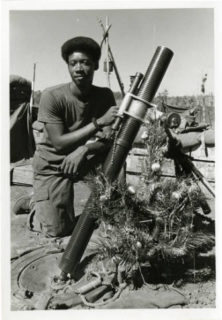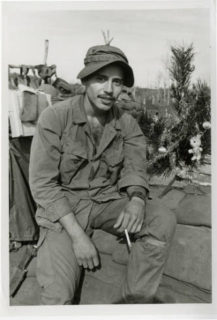This story was submitted as part of Minnesota Remembers Vietnam
By Doug Bradley | U.S. Army | Long Binh, Vietnam

Panel W5 Line 104. His name isn’t supposed to be there. But it is: Stephen H. Warner. Last time I visited the Wall in Washington, D. C. my then 16 year-old niece helped me hold a piece a paper over the name while I tried to make a pencil rubbing. Like so many futile hands that have struggled at this gabbro wall for almost 30 years, I’m hoping I can rub the name off, make his death disappear.
But I can’t. And it won’t.
Guys like Steve Warner weren’t supposed to get killed in Vietnam. He and I were meant to spend our 365 days in Vietnam in the rear (we were categorized as REMFs, specifically “rear echelon mother f******”), working in a corporate-esque, bright and shiny, public information office in the U.S. Army’s headquarters at Long Binh, a former rubber plantation about 15 miles from Saigon. And while we didn’t necessarily write the truth about what was going on, or going wrong, in Vietnam, we could at least stay out of harm’s way.
Unless you were Steve Warner.
Like a lot us who were drafted into the Army and sent to Vietnam during the later stages of the war (1970s), Steve was not an admirer of U. S. policy in Vietnam. But, unlike the rest of us REMFs, Steve put his principles where his mouth was and took every occasion to go out into the countryside and see exactly what was going on. While he was out there, he made a point of interviewing, photographing, and connecting with the GIs who were doing the fighting and dying.
In retrospect, this only helped, I think, to add to his consternation about the war. I remember his being especially angry when he was told to “paint out beads” at the bottom of one of the photographs he took when he was out in the field. During this time (1970-71), many soldiers were wearing a plethora of physical adornments, including “Love Beads,” a direct violation of military dress regulations. Steve shot the photos the way he saw them and stood his ground with the military “censors” who told him to remove the beads from his shots.
He wouldn’t do that.
By the time I got to Long Binh, South Vietnam, and was working in the same office as Steve, he’d dedicated himself to being the Vietnam War’s version of Ernie Pyle, the great WWII war correspondent.
“What sold me on Ernie Pyle,” he wrote to his parents, “was a book by him . . . it said ‘He hates war but loves the men who have to fight them.’ That about sums me up too!”

Stephen H. Warner was killed in an ambush near the Laotian border on February 14, 1971. He didn’t have to be there. He wasn’t supposed to be killed. . .
Steve’s writing and photographs are part of a permanent exhibit at Gettysburg College, and his life and death are the subject of a book by Arthur J. Amchan entitled “Killed In Action: The Life And Times Of Sp4 Stephen H. Warner, Draftee, Journalist And Anti-war Activist”.
But for me, the panel on the wall says it all, because it is, like so many other Vietnam war deaths, a terrible waste.
Steve Warner’s steadfastness has been my inspiration for more than 45 years as I struggled to complete my book about life in the rear in Vietnam. “DEROS Vietnam: Dispatches from the Air-Conditioned Jungle” was eventually published. The title is an acronym and stands for Date Eligible for Return from Overseas. The book is dedicated “To all those who served in Vietnam but didn’t live to see their DEROS date.”
Steve Warner, Panel W5 Line 104, is one of them.
© Twin Cities Public Television - 2017. All rights reserved.
Read Next




